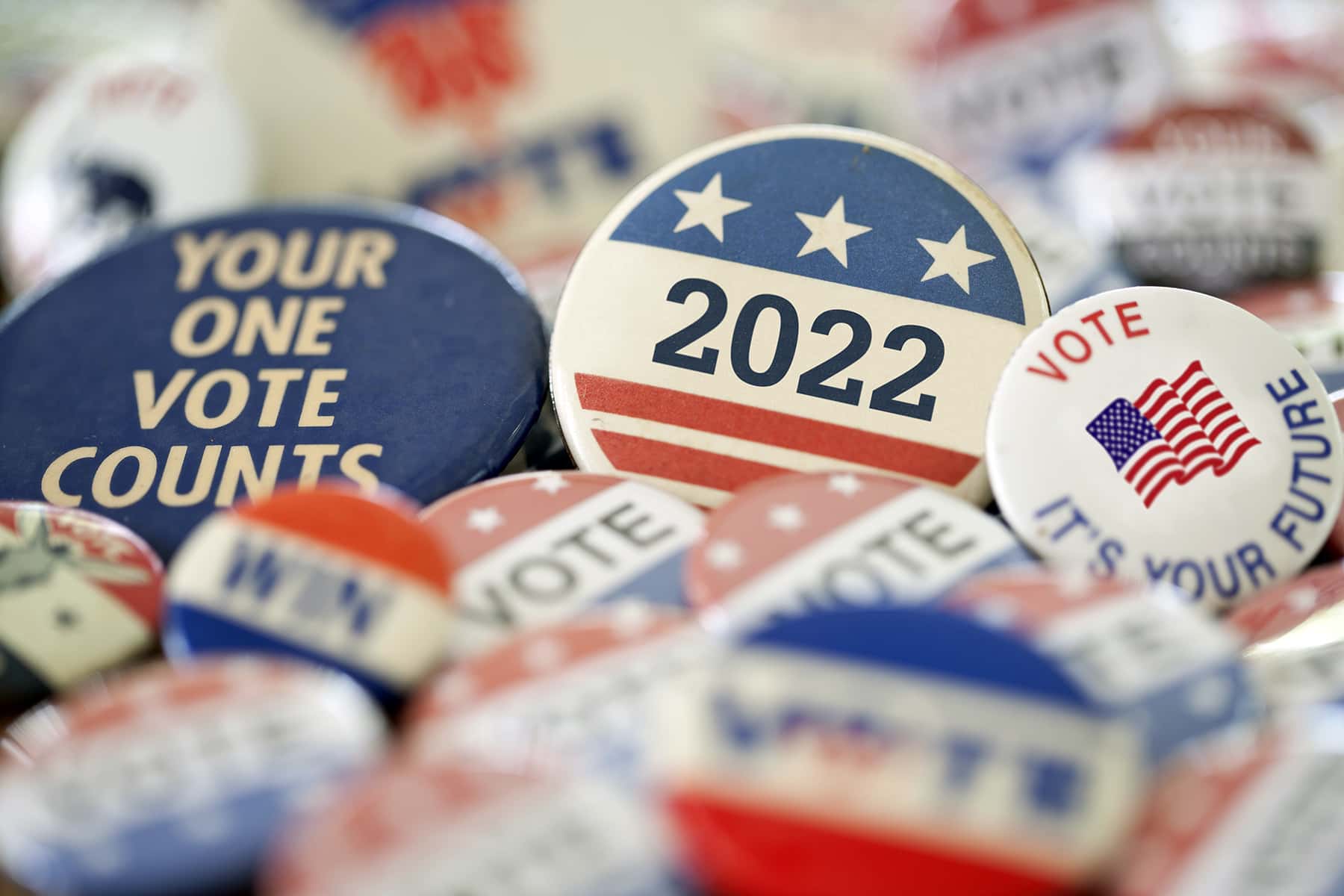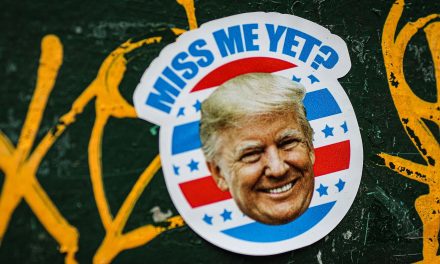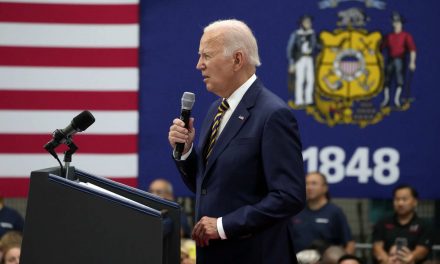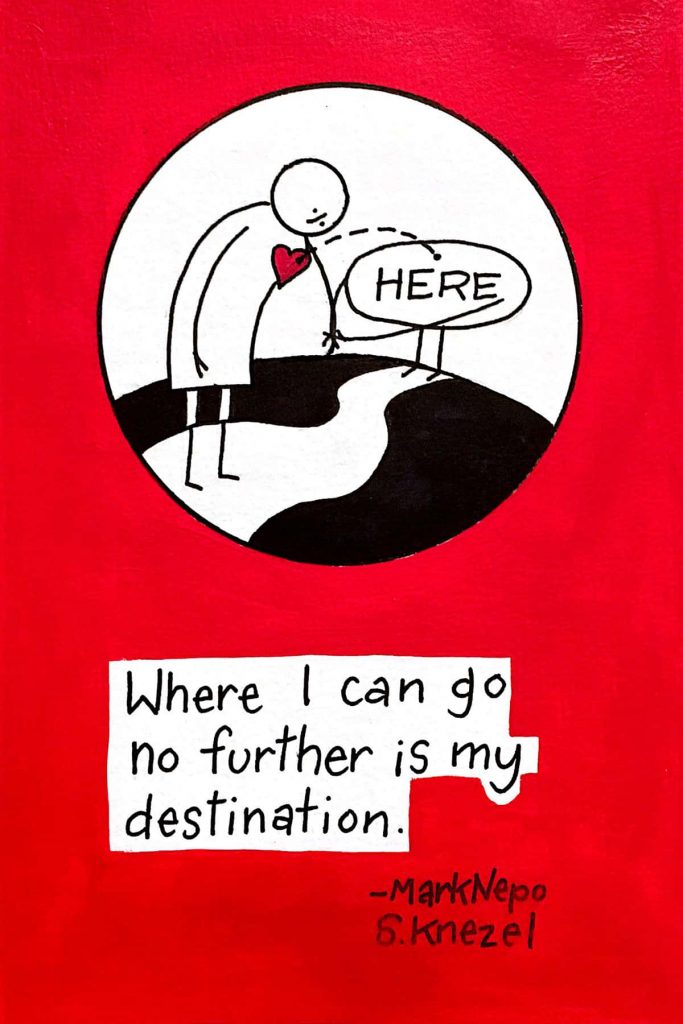
Our vote is the most important part of the American commons. The commons are those realms that we all own and jointly administer through our government.
They include our air and water; our roads and skyways; the frequency spectrum we use for communication, radio, and television; our public school system; our military, police, and fire departments; the agencies we use to ensure the safety and quality of our food and medications; the systems and laws that keep people playing the game of business within legal boundaries; our jails and prisons; our oceans and public lands; and our social safety net—among other things.
In this era of rapid climate change, our atmosphere and oceans, which absorb 95 percent of the extra heat in our atmosphere, are the most critical of our commons, because they have the potential, through destabilization of weather and sea level rise, to destroy civilization and even to render our planet sterile of human life.
Because government is the tool we use to define, protect, and care for most all of our commons, government could be said to be the most important of all our commons. And because the vote is how we determine who runs our government and what policies are employed, the vote stands as the single most important part of the commons, above even government itself. As Thomas Paine said, “The right of voting for representatives is the primary right by which other rights are protected. To take away this right is to reduce a man to slavery.”
Today in the United States there is a concerted and well-organized campaign to prevent some people from voting while making it more and more convenient for others. At the core of this effort are think tanks, media, publications, pundits, and politicians entirely owned or heavily influenced by a relatively small group of billionaires and corporations whose wealth and business models depend on despoiling and/or exploiting the commons for profit.
This group, operating loosely under the rubric of the Republican Party, has worked for decades to deceive people into thinking that poorly paying nonunion jobs represent freedom, that lack of health care is liberty, that protection of the environmental commons is despicable “regulation,” and that people working to encourage others to participate in our democracy by voting (like, for example, the League of Women Voters) are engaging in “voter fraud” and should be harassed or prosecuted out of existence.
Today’s right-left battle was seeded in 1971 when Lewis Powell, the year before Richard Nixon put him on the Supreme Court, wrote his infamous memo to the U.S. Chamber of Commerce, imploring the very wealthy and big business to get politically active. He explicitly called for a vigorous effort to take over the court system of America, which he believed was being used way too often against business and the rich by environmentalists and “consumer activists” like Rachel Carlson and Ralph Nader (whom he calls out early in the memo) and the ACLU.
Realizing that the Supreme Court had engaged in a massive power grab in 1803 with the Marbury decision (an entire other story in its own stead that is told in The Hidden History of the Supreme Court and the Betrayal of America), he knew that the nine justices had become, essentially, the new kings and queens of America with the power to second-guess and thus strike down laws passed by Congress and signed by the president, as well as create law from whole cloth (as the Court did in Dred Scott and Plessy, among others). Powell wrote:
Under our constitutional system, especially with an activist-minded Supreme Court, the judiciary may be the most important instrument for social, economic and political change.
Other organizations and groups, recognizing this, have been far more astute in exploiting judicial action than American business. Perhaps the most active exploiters of the judicial system have been groups ranging in political orientation from “liberal” to the far left.
The American Civil Liberties Union is one example. It initiates or intervenes in scores of cases each year, and it files briefs amicus curiae in the Supreme Court in a number of cases during each term of that court. Labor unions, civil rights groups and now the public interest law firms are extremely active in the judicial arena. Their success, often at business’ expense, has not been inconsequential.
This is a vast area of opportunity for the Chamber, if it is willing to undertake the role of spokesman for American business and if, in turn, business is willing to provide the funds.
His memo activated a group of previously disparate conservative billionaires and their foundations, from Scaife to Coors to the Kochs. And when, two years later, the Court struck down anti-abortion laws with Roe, this group went into hyperdrive.
As Powell wrote, “There should be no hesitation to attack the Naders, the Marcuses and others who openly seek destruction of the system. There should not be the slightest hesitation to press vigorously in all political arenas for support of the enterprise system. Nor should there be reluctance to penalize politically those who oppose it.”
Employing strategies laid out by operatives such as Jude Wanniski (the “Two Santa Clauses” plan), Paul Weyrich (“I don’t want everyone to vote”), and Paul Manafort (who helped supervise the electoral strategies, including massive voter suppression, used by Presidents Gerald Ford, Ronald Reagan, George H. W. Bush, Bob Dole, and Donald Trump), preventing “undesirable” people from voting has become central to Republican victories for the past two generations.
Control the Vote, Control the Country
In 2016, 6 percent of Americans who were eligible to vote nominated Donald Trump as the GOP’s presidential candidate. It was 8 percent for Hillary Clinton on the Democratic side. Trump went on to be elected president by 26 percent of eligible voters. The modern American oligarchs have largely stayed in power using three simple elements:
- explicit and overt racism,
- massive disinformation campaigns, and
- voter suppression.
No ideas. No push for better schools, hospitals, airports, roads, or bridges, or reform of our health, energy, or financial systems. No promise of more and better jobs. None of these staples of past presidential campaigns can be found in pretty much any Republican advertising today.
Instead, the public Republican message is all about race—or the subset of race, religion (“Muslim” stands in for “brown Arab” in GOP-speak) and immigration (aka brown people from south of our border)—and socialism.
Meanwhile, Republican secretaries of state across the nation are vigorously purging voters from the rolls (over 17 million, more than 10 percent of America’s active voters, in just the 2016–1018 period, according to NBC News).
After the five Republican appointees on the U.S. Supreme Court gutted the Voting Rights Act in 2013, 14 GOP-controlled states moved, within a year (some within days), to restrict access to the vote, particularly for communities of color, students, and retired people.
In North Carolina, for example, 158 polling places were permanently closed in the 40 counties with the most African American voters just before the 2016 election, leading to a 16 percent decline in African American early voting in that state. An MIT study found that, nationwide, Hispanic voters wait 150 percent longer in line than white voters, and black voters can expect to wait 200 percent longer in line to vote.
In Indiana, then-Governor Mike Pence’s new rigorous voter ID law caused an 11.5 percent drop in African American voting. Students are suing for their right to vote, and retired people who no longer drive but care passionately about their Social Security and Medicare are being turned away at the polls by the hundreds of thousands because their driver’s licenses have expired.
The obvious failure of 40-plus years of Reaganomics and GOP policies to maintain a functional middle class in America has been a problem for the modern GOP.
In 1974, for example, the GOP had outright control of only seven states. The message “Elect us and we’ll help the rich people” did not generally resonate with American voters. It is the reason why, outside of the fluke elections of 1946 and 1952, Democrats controlled the House of Representatives outright for three generations, from 1933 to 1996, and controlled the Senate for most of that time.
Desperate to win the presidency for the GOP in 1968, Richard Nixon went so far as to commit treason by torpedoing a peace deal that President Lyndon Johnson had worked out with the North and South Vietnamese. According to Abolhassan Bani-Sadr, then president of Iran, Ronald Reagan did the same thing by cutting a deal with Iran whereby they would hold on to the U.S. embassy hostages until after the 1980 presidential election, torpedoing President Jimmy Carter’s chances of reelection.
But in 2000 the GOP changed tactics. After Reagan was almost busted for his part in Iran-Contra (he testified that he had “forgotten” about details of the program more than 80 times; his growing Alzheimer’s spared him an indictment), they realized that getting busted for treason was not worth the risk. They needed a Plan B.
And it was deliciously simple. If most voters do not like what you are selling, then just do not let them vote.
Paul Weyrich promoted this idea back in 1980 when he was campaigning for Reagan (after cofounding the Heritage Foundation), and, indeed, many Republican luminaries (such as William Rehnquist, who went from serving the GOP by standing in polling places and intimidating Hispanic and Native American voters in the 1960s to becoming chief justice of the Supreme Court) rose up through the ranks by participating in Republican-run voter intimidation schemes.
Voter suppression became the foundational go-to tactic for the GOP in 2000. Although the GOP attacked Democratic presidential nominee Al Gore with smear and innuendo (ridiculing him for helping write the legislation that created the modern internet, for example), the main thing that got George W. Bush into the White House was voter suppression.
His brother, Florida governor Jeb Bush, and Bush’s secretary of state, Katherine Harris, threw somewhere between 20,000 and 90,000 African American voters off the rolls. They were able to get the vote close enough that five Republican appointees to the Supreme Court functionally awarded Bush the presidency. (The BBC covered this in 2001 in two major investigative reports that were seen all over the world—except on any American media.)
By 2016, the Republican Party had fine-tuned its voter suppression and intimidation systems to the point that they ran like well-oiled machines in nearly 30 states. Between the 2012 and 2016 presidential elections, for example, Ohio had purged more than two million voters from its rolls, the vast majority (more than two to one) in heavily African American and Hispanic counties. The five Republican appointees on the Supreme Court ruled in 2017 that they could keep it up, and other states have since adopted their new tactic of caging voters (challenging their registration status by mailing them postcards and then striking them from the voter rolls if the postcards aren’t returned).
The New York Times reported in 2017 that in Wisconsin, about 17,000 registered voters may have been turned away at the polls in November 2016 because they did not have the particular types of ID necessitated by Scott Walker’s new voter ID law (and Ari Berman reported in the Nation in 2016 that as many as 300,000 Wisconsinites lacked the ability to even register to vote because of the law).
It is symbiotic: Billionaires and corporations spend hundreds of millions to fund Republicans, who pass laws and tax breaks that give billions to the corporations and billionaires, who then recycle a fraction of that, mere millions, back to the legislators they own. To keep the cycle going, both must prevent people who object to this system from voting.
The American Legislative Exchange Council (ALEC), funded by the Koch network and other billionaires and big corporations, has been at the forefront of these efforts, with ALEC-affiliated Republican legislators introducing the majority of voter suppressive state laws. ALEC itself facilitated the production of voter suppressive “model legislation.”
Average American voters generally don’t like billionaires and corporations running politics, so the billionaires and their corporations have organized major efforts to keep those people from voting. How many people? Numbers are sketchy because Republican secretaries of state are unwilling to release purge numbers and details without being sued to do so.
In 2018, investigative reporter Greg Palast sued a number of Republican secretaries of state and got his hands on purge lists that included more than 90,000 people in largely Democratic parts of Nevada, 769,436 voters purged in Colorado, 340,134 in Georgia, 550,000 in Illinois, a large but as-yet-uncounted list from Nebraska, and 469,000 purged in Indiana.
Without these major voter purges, and without the disenfranchisement of young people, old people, and poor people by voter ID laws, it’s a virtual certainty that America would have had President Al Gore and President Hillary Clinton, and the Democratic Party would have a six-to-three or larger majority on the U.S. Supreme Court.
Using voter suppression, the GOP has maintained a situation that’s so hostile to workers that wages have fallen for the bottom half of American workers in the years since Reagan’s 1980 election.
But the old debates keep resurfacing, with the GOP echoing the positions of the founding generation’s conservatives, such as John Adams. Adams wrote in a letter to James Sullivan in May 1776:
Depend upon it, Sir, it is dangerous to open So fruitfull a Source of Controversy and Altercation, as would be opened by attempting to alter the Qualifications of Voters. There will be no End of it. New Claims will arise. Women will demand a Vote, Lads from 12 to 21 will think their Rights not enough attended to, and every Man, who has not a Farthing will demand an equal Voice with any other in all Acts of State. It tends to confound and destroy all Distinctions, and prostrate all Ranks, to one common Levell.
Echoing today’s more progressive politicians, Benjamin Franklin felt that the vote should be more widely available, regardless of wealth or property ownership.
Thomas Paine agreed with Franklin and went further, outright vilifying the wealthy landowners of his time who didn’t want average non-landowners to vote. “[W]ealth is no proof of moral character; nor poverty of the want of it,” he wrote. “On the contrary, wealth is often the presumptive evidence of dishonesty; and poverty the negative evidence of innocence.” He added, “The proposal therefore to [disenfranchise] any class of men is as criminal as the proposal to take away property.”
But the GOP’s war on voting since the early 1970s is fundamentally about seizing control of government and thus the commons, and turning both into private profit machines, regardless of the consequences for We, the People.
* * *
The Founders Feared a Trump-Like President — Which Is Why They Established the Electoral College
The founders and framers thought they could prevent somebody like Donald Trump from ever becoming president. They were wrong, and we’re still paying the price. It is often said that the Electoral College was brought into being to perpetuate or protect the institution of slavery, and, indeed, during the first half-century of America it gave the slave states several presidents who otherwise wouldn’t have been elected.
Most of the pro-slave-state bias of the Electoral College, however, was a function of the Three-Fifths Compromise (which, until the 1870s, gave slave states more members in the House of Representatives than called for by the size of their voting public) and the decision to give each state two U.S. senators.
But, according to the framers of the Constitution themselves, the real reason for the Electoral College was to prevent a foreign power from placing their stooge in the White House.
Book Excerpt: The Hidden History of the War on Voting
The book that lays bare a 50-year conspiracy by a small but fabulously wealthy group of mostly white men to seize control of the American political system and turn it exclusively to their own profit.
© Thom Hartmann, used with permission. Originally published on The Hartmann Report as The Heartbeat of Democracy
Subscribe to The Hartmann Report directly and read the latest views about U.S politics and other fascinating subjects seven days a week.















